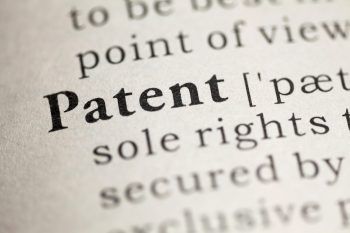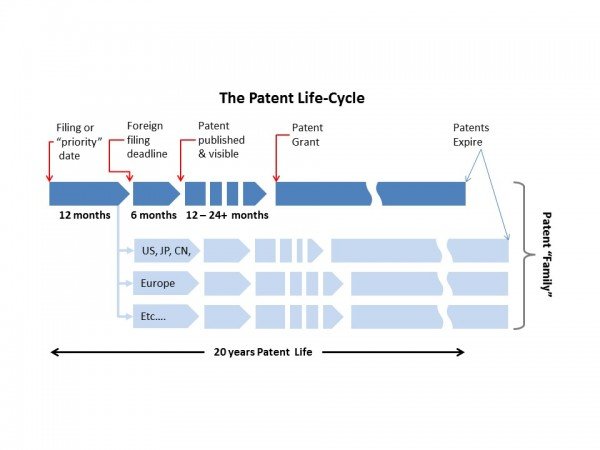
In your role as a product manager, you are expected to make decisions and trade-offs about product features, product roadmaps and when and where to launch your products. In what sometimes can seem like a parallel world, corporations are spending billions on building patent portfolios to protect all of these products and features.
Patent litigation is on the up with over 20% growth each year since 2010 (according to a PWC study for the US). And according to the latest figures from the World Intellectual Property Organisation patent filing is at an all-time high with 2.35 million applications per year. A third of these are in the areas of information & communication technology or electronics.
But how much do you really understand about the patent world? Do you understand where the opportunities are and are you aware of the pitfalls and risks of, what can seem like, a patent minefield? This blog aims to answer these questions, lift the lid on patenting and provide product managers with some key information about patents.
Why does it matter? Well at the most basic level a patent can give you protection for your idea and block competitors from copying it for up to 20 years – unless of course they are prepared to pay a license for the privilege.
On the flip side, there’s always the risk that you could inadvertently spend large amounts of time and money working on something already patented by a competitor. Worse still you could end up being sued for patent infringement for launching a product with a feature that is covered by a competitor’s patent.
Ignorance of the patent is no defense and the consequences could at the very least mean having to withdraw the product from the market and could even mean paying extensive damages and licensing fees.
So starting at the beginning, what is a patent and how does the global patent system work?
A patent is an exclusive right granted by a government to exclude anyone else from making, using, marketing or selling an invention for a period of time (usually 20 years) in exchange for public disclosure of the invention so it may be copied by others when the patent expires.
Patent activity is all about time and dates and as soon as you start to think about an invention the clock starts ticking. This is because the patent system in almost every country is based on what’s known as the First to File system. This means regardless of who thought of it first if two or more inventors come up with a new idea, the one who gets to the patent office first, to file their application, gets to own the patent.
So the first key date in the patenting process is when the application is lodged with the patent office. That date is known as the application date and also referred to as “the priority date” because everything that follows is calculated from that point. Once the application is filed the next key date is 12 months after the priority date. This is the international filing deadline and means that if you want to protect your invention in other countries you need to have these applications filed by that date. Their 20-year clocks start ticking from that point. Alongside the original priority patent these foreign versions, covering the same invention, are known as a patent family.
The next key date is 6 months later, which is known as the publication date. This is the point when the patent office makes public your application. It’s only at this point that your invention becomes visible to the world at large and to your competitors. At this point, the patent examiners should have started investigating your application to determine whether the patent should be granted. What they need to be sure of is that your invention is novel, nobody else has ever patented it or publicly described it anywhere else in the world and it isn’t obvious to an expert in that field.
The process of dialogue between the patent office and the inventor or his attorney is called patent prosecution (the process of going to court to settle infringement being patent litigation). The prosecution can typically take up to 2 more years from the publication date before the patent is either granted or refused. Throughout this period the patent is “pending”, hence the Pat. Pending notice is often seen on products. Once granted the patent owner must pay annual fees to keep the patent in force. Failure to pay a fee means the patent will lapse and protection will be lost, meaning anyone can copy the invention.
So what does this all mean for the product manager?
Firstly and perhaps the most important lesson is to keep your inventions secret. This may seem obvious but you may be getting ready to launch your new product and want to refer to the cool new invention in your marketing materials. If you are thinking of applying for a patent though you need to be careful as any public disclosure could potentially invalidate your patent application.
One factor the examiner will look at when deciding on an application, is public disclosure before the priority date, by anyone, including the inventor! So having NDA’s in place before talking to customers and partners isn’t just about commercial confidentiality.
Secondly, product managers need to think about whether there are any blocking patents that cover new products and features. This isn’t just limited to your home market but anywhere in the world where you plan to sell or manufacture your product. A patent attorney will be able to advise how best to go about this but there are expert patent search companies that can provide this service and who will carry out a “freedom-to-operate” search.
Thirdly patent information, freely available online at patent offices around the world, can be a great source of competitor information to see in which areas of technology your competitors are focusing on. Equally, analyzing the patents around a specific area of technology is a great way to identify new market entrants and competitors. Again specialized patent search companies will be able to perform these searches and produce reports of the competitive patent landscape.
So what does it cost to build a patent family? Well, anything between £10k and £1m depending on the technology field, the scope of the invention and where in the world you need protection. If you have an internal IP department they will be aware of the costs and if not an external patent attorney will be able to discuss this with you.
Whether patenting of your inventions is the right thing for your company is something you will have to decide for yourself with the help of a qualified patent attorney but what is undeniable is that product managers need to be more aware of the patent world and in particular the risks of infringing existing patents of competitors.
Mark Mallinson
Mark Mallinson is a B2B product management and marketing professional with over 20 years’ experience working for start-ups and some of the world’s largest technology companies such as Vodafone and IBM. Most recently he spent 7 years working at CPA Global, the world’s leading provider of patent support services.



Join the conversation - 1 reply
Thanks for the blog. Good summary!